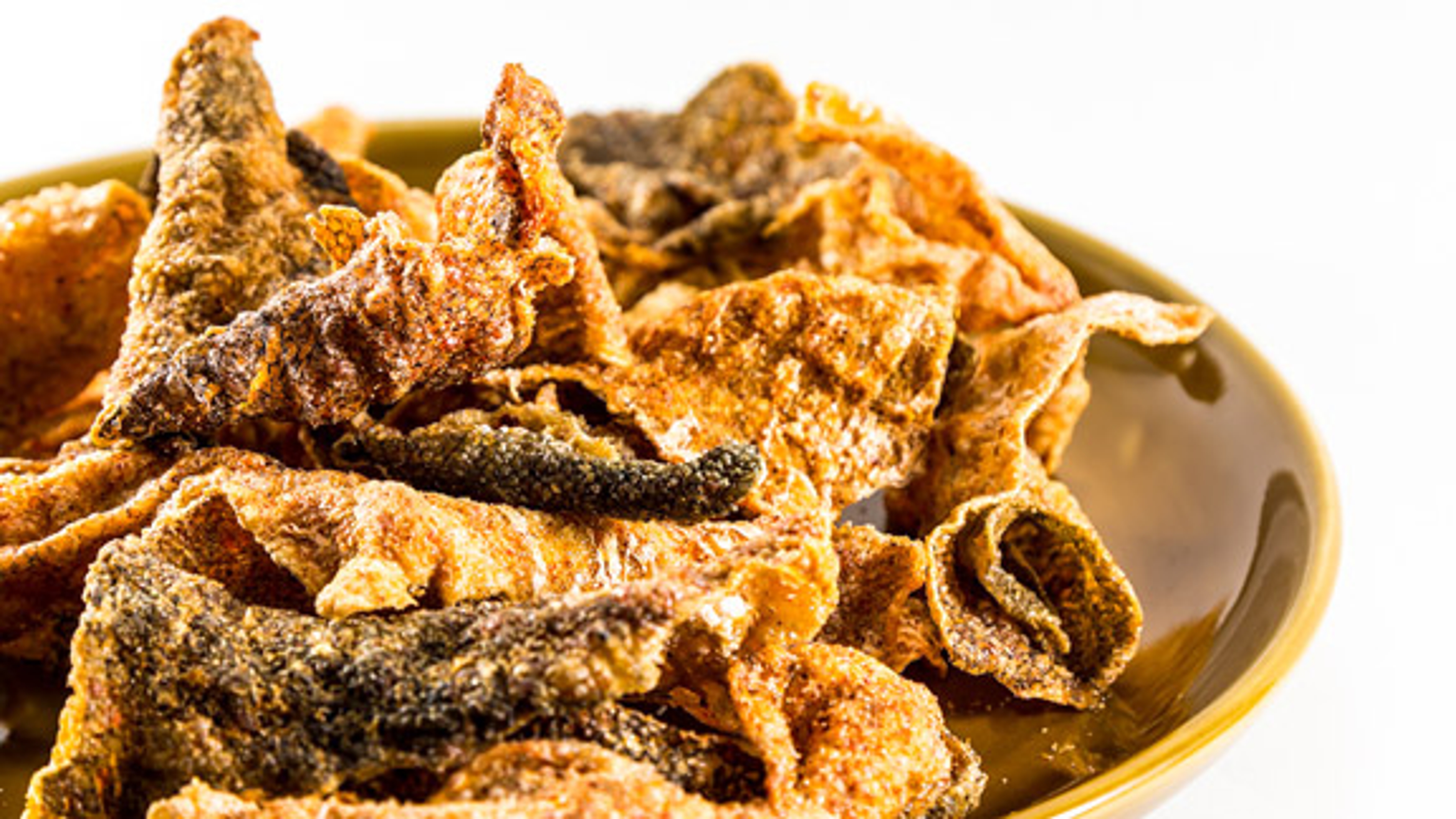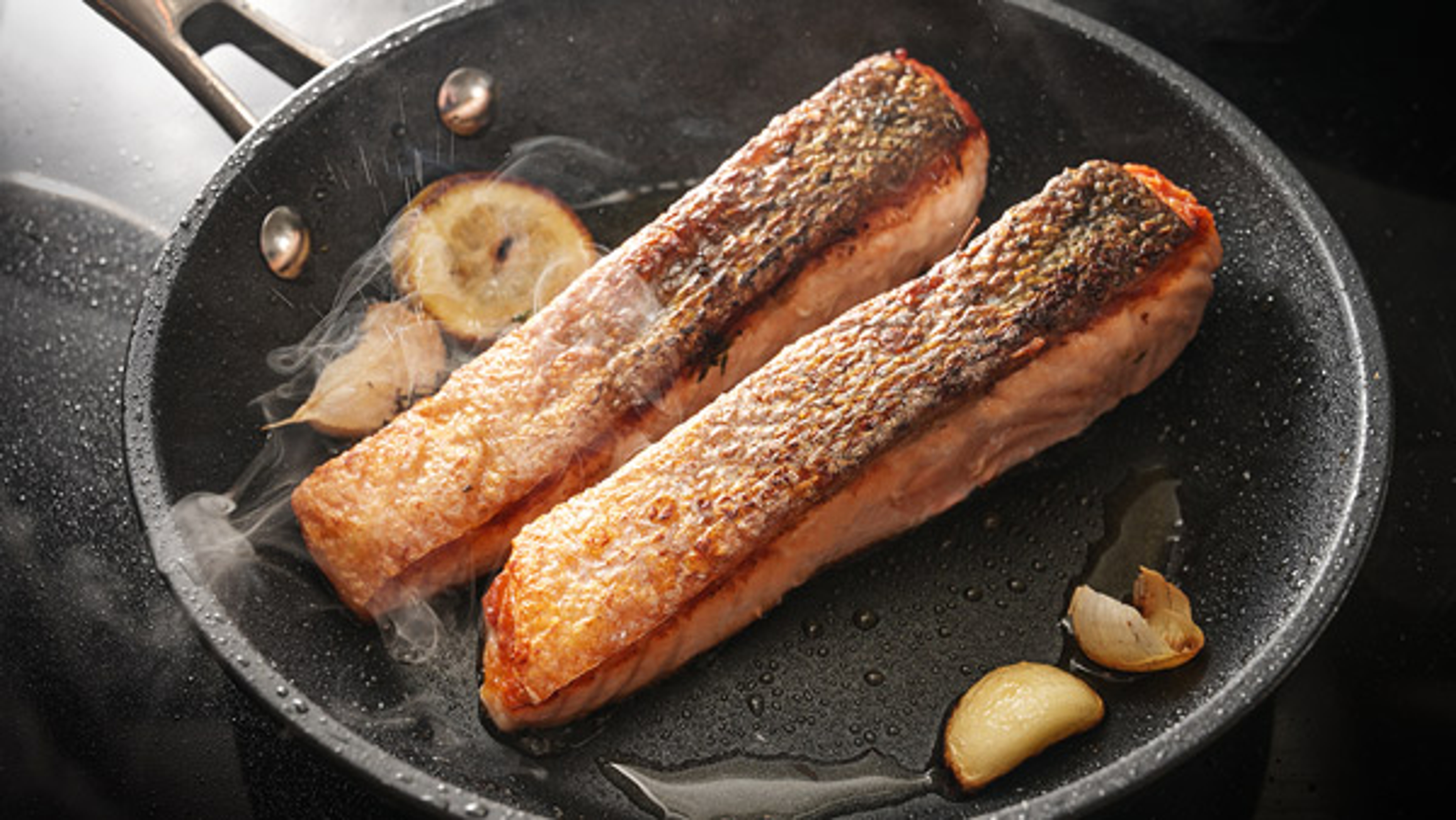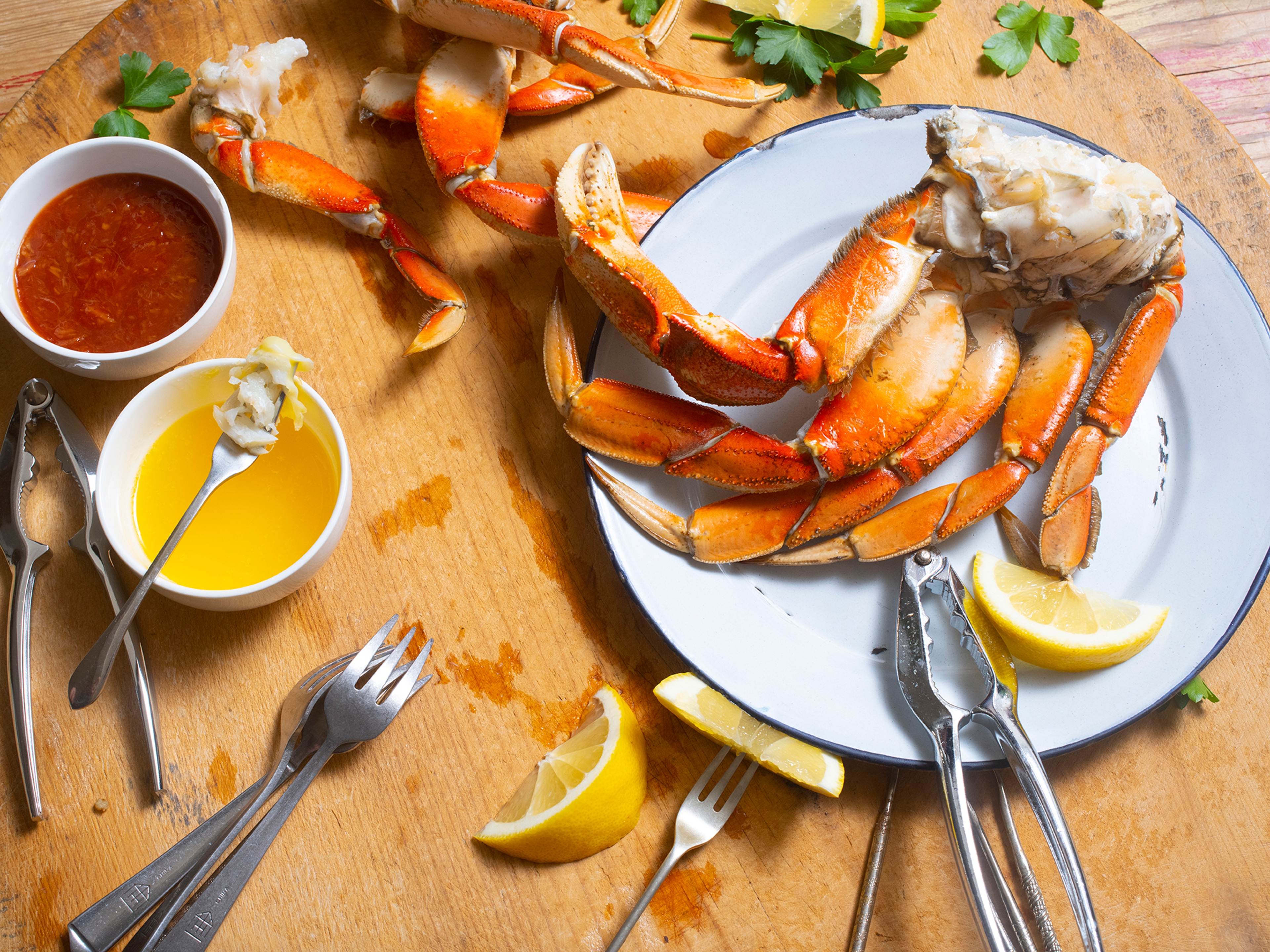Cook Perfectly Crispy Fish Skin Every Time
It's the best part of the fish and yet, often discarded. Here's how to make fish skin irresistible.
May 03, 2022
Do you always take the skin off your fish fillets before you cook? You're not alone. Many people assume fish skin always has an off-putting texture or is even not consumable. But cooking a fillet, especially from a fish such as wild salmon or whitefish, is actually easier with the skin on. And cooked properly, crispy fish skin adds a flaky, delicious layer to your meal.
Trust us. You may never go back to removing the skin again!
Does fish skin taste good?
The skin, eaten independent of the whole fish, has made tasty snacks for cultures around the world for centuries. Singapore residents love salted fish skin dipped in egg-yolk batter and fried until crispy. This treat is available in bags, like potato chips.

You'll find crispy fish skin tastes much like whatever fish you're dining on, whether wild salmon, Alaskan cod, Chilean sea bass or something else, albeit with a rather more substantial, and we would say equally delightful, texture.
Fish skin also includes many of the same nutrients as skinless fish fillets do. That means vitamins A and D, iron, omega-3 fatty acids, and more.
How to cook fish with skin on
The key to tasty skin-on fish is to thoroughly dry the fillets before cooking. Drying it can be as simple as leaving the fillet on a plate skin-side up and uncovered in the fridge for an hour before cooking. You can also pat it dry with paper towels or a clean, cotton kitchen towel. Basically, do whatever you can to soak up any extra moisture.
It's likely your bad memories of fish skin are due to chefs (or home cooks) who started with wet fish. Extra moisture steams the skin, leaving it soggy and unappetizing. Soggy skin is also more likely to stick to your pan and become harder to take off while you're eating, and subsequently cleaning. That's why drying your fillets before cooking is a win-win-win (tastier if you're eating it, easier to cook, and easier to remove if you're discarding).

Whether you're pan-roasting, pan-searing, broiling, or using some other method, you'll want to start cooking with the skin-side down. That way, it'll be easier to flip, and the skin will be easier to remove, should you choose to do so, before eating. But again, you might just find that the brown, crispy skin you achieve with this method can be delicious!
It's best to opt for high heat when crisping fish skin. The best way to ensure success: press down on the fillet for about 30 seconds while it is skin-side down to make sure the entire bottom is getting seared.
Don't worry if the fillet sticks to the pan initially. Once the skin starts to crisp, your spatula will slide right under. This is particularly true if you choose a non-stick pan, such as one of the newer ceramic-based nonstick options.
Which fish are best cooked skin-on?
The best fish to cook with the skin intact are often those with thin, tender fillets. Salmon, like Wild Alaskan Sockeye, Wild King, or Wild Alaskan Silver Salmon are all excellent options. Whitefish are great too, like Wild Alaskan Sablefish or Wild Atlantic Haddock.
The only fish that might thwart your crispy-skin plans are thicker cuts, like steaks of tuna. (But don't worry, there are plenty of other delicious ways to eat tuna, such as in an ahi tuna poke bowl.)
By the way, if a restaurant serves you a skin-on fish dish, there are a few clues to whether you're supposed to eat it or not. A chef who places a fish skin-side up, with skin that's brown and crispy and easily cut with a fork, is providing you with clues that the skin is meant to be eaten. (And you should at least try it!)
Skin-side down will be easier to eat around, and if it's soft and soggy, you might not enjoy it very much. In that case, it's the diner's choice.
What about the scales?
Luckily, many of the skin-on fish fillets you might find at the store or from quality online retailers will already be de-scaled. That is, even though the skin is still on, the supplier has removed the scales. So then it's just a matter of how it's prepared, how delicious it is, and whether you want to eat it.
The bottom line
If you've never eaten fish with perfectly browned, crispy skin, give it a try! With a little practice, you can easily fry up skin-on fillets at home. Just remember to thoroughly dry your fillets before cooking. Skin-on wild salmon is a great place to start, and for many people, is the star of the crispy skin options. Bon appétit!







